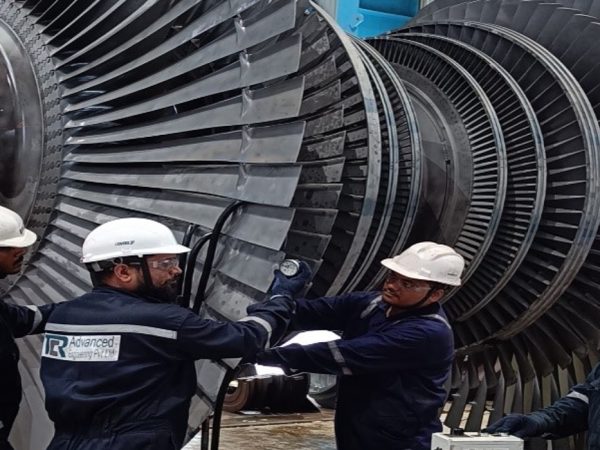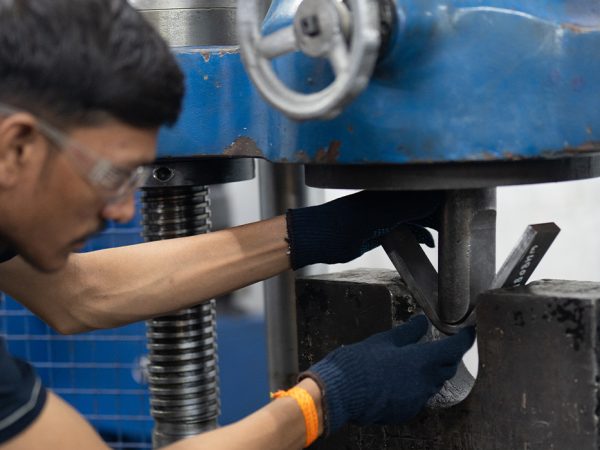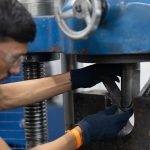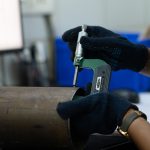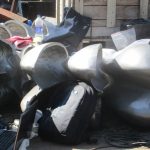In the operation of modern power-generation and industrial facilities, a gas turbine represents a critical piece of equipment whose reliable performance is vital to safety, cost-control and uptime. When things go wrong, undertaking a clear, methodical Root Cause Analysis becomes essential. This article focuses on the topic of Failure investigation of Gas turbine systems, exploring the process of Failure and Root Cause Analysis, the role of specialised services such as Heat Exchanger Inspection in the broader investigative scheme, the generation of a thorough Failure Investigation Report, and why engaging a capable partner such as TCR Engineering Pvt. Ltd (Failure investigation of Gas turbine Provider) is a wise decision.
What is Root Cause Analysis
At its core, Root Cause Analysis is a structured approach used to identify the fundamental underlying causes of a failure or problem—rather than merely treating the symptoms. In the context of heavy machinery such as gas turbines, it means moving beyond “the turbine tripped” or “a blade broke” to ask “why did the blade break?” and “what underlying conditions allowed or triggered the breakdown?” By uncovering those deeper causes, operators can implement corrective and preventative actions that reduce recurrence, minimise downtime, ensure safety, and improve reliability.
A good Root Cause Analysis emphasises evidence over assumption, uses data from inspections and monitoring, and draws on expertise across disciplines—mechanical, metallurgical, thermal and systems engineering. In doing so it enables a shift from reactive fixes to proactive resilience.
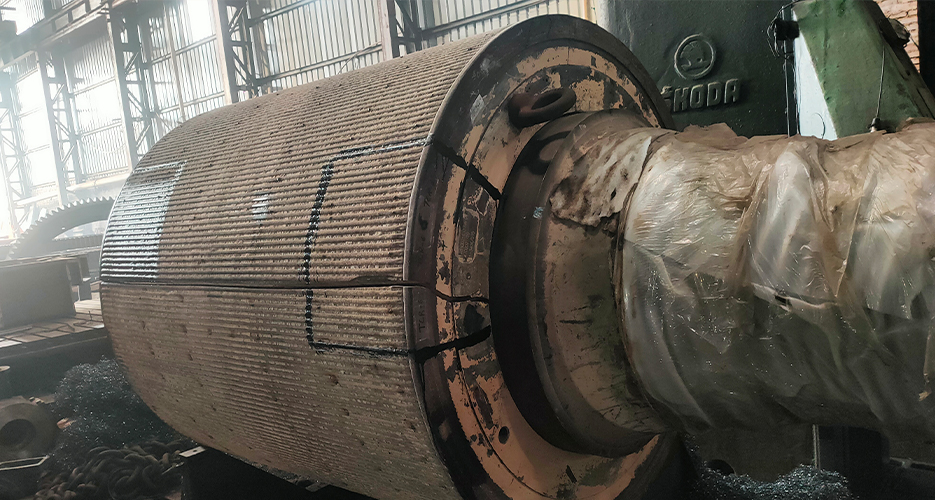
Failure investigation of Gas turbine
When a gas turbine experiences abnormal behaviour—such as unexpected shutdowns, loss of power output, increased vibrations, overheating or component failures—a dedicated Failure investigation of Gas turbine becomes indispensable. The investigation typically follows several broad phases:
Incident discovery and initial assessment – The moment a fault is detected (for instance, elevated exhaust temperature, abnormal vibration, or unusual noise), the investigation team isolates the turbine, gathers initial data such as operating history, loads, fuel quality, ambient conditions, recent maintenance and any anomalies in monitoring.
Detailed component inspection – Key parts of the turbine system are inspected: the compressor section, combustor, turbine rotor and blades, seals, bearings, lubrication systems, and possibly upstream/downstream equipment. Here a specific element such as the Heat Exchanger Inspection may come into play, especially if the turbine’s performance was impacted by thermal inefficiencies or cooling issues.
Material and structural analysis – Failed components are removed and undergo metallurgical examination, fractography, non-destructive testing and other forensic techniques. This step helps determine whether fatigue, corrosion, erosion, foreign object damage (FOD), thermal overload, creep or manufacturing defects contributed to the failure. For example, hot corrosion, high-cycle fatigue, erosion and coating breakdown are common in turbine blade failures.
Systems and process review – The investigation team assesses the operating context: Was the fuel quality maintained? Was the intake air contaminated or overheated? Was maintenance scheduled and executed as per design? Were there unusual starts-stops or load transients? Issues such as bearing wear, lubrication contamination, or compressor stall behaviour may all feed into the root cause.
Data synthesis and causal modelling – The gathered evidence is combined to build a logical chain from root cause(s) to immediate failure. For instance: fuel contamination → deposition on hot-gas path → hot corrosion of turbine blades → crack initiation → blade fragment release → vibration trips.
Recommendation and reporting – The culmination of the investigation is the Failure Investigation Report which documents findings, root causes, recommendations for repair, operational changes, maintenance strategies, monitoring enhancements and long-term prevention.
Throughout this sequence, the term Failure and Root Cause Analysis accurately describes the integrated process—first identifying the failure mode, then drilling down to the root cause(s). The goal is not only to explain what failed but why it failed, and what must be done to prevent recurrence.
Reason of Failure investigation of Gas turbine
Why is a dedicated Failure investigation of Gas turbine so important? There are several key reasons:
- Safety and environmental risk: Gas turbines operate at very high temperatures and pressures, rotating at high speeds. A failure can result in unplanned shutdowns, mechanical damage, fire or explosion hazards, and environmental or regulatory consequences.
- Cost and downtime: Forced outages of turbines often carry heavy financial penalties—lost production, repairs, replacement components, and potential contractual or regulatory costs. Being able to identify root causes quickly reduces downtime and limits repeat failures.
- Reliability and performance: Even if the turbine recovers, underlying issues may degrade performance, efficiency, or lifespan of components. A root-cause investigation ensures that the health of the machine is restored fully, not just superficially.
- Maintenance optimisation: Understanding how and why failures occur enables operators to refine inspection schedules, adopt condition-based monitoring, adjust operational limits, and schedule preventive interventions rather than reactive fixes.
- Asset integrity and lifecycle management: A gas turbine is a major capital investment. Failure investigation supports long-term integrity and gives confidence in the asset’s remaining life, enabling better planning for overhauls, replacement or upgrade cycles.
Additionally, inspection tasks such as Heat Exchanger Inspection may come into play because auxiliary heat exchangers influence turbine inlet temperatures, efficiency, and the thermal stress environment. A poorly performing heat exchanger can result in higher turbine temperatures, accelerating damage and creating conditions that precipitate failure.
In short, when even a minor fault is allowed to propagate unchecked, the consequences can be disproportionate. A full investigation helps stop the chain at its origin.
Why TCR Engineering Pvt. Ltd is the Best Choice
When it comes to engaging a partner for Failure investigation of Gas turbine, selecting a specialist provider matters. TCR Engineering Pvt. Ltd (Failure investigation of Gas turbine Provider) stands out for several reasons:
- Specialised expertise: TCR Engineering is focused on failure investigation services for gas turbines and allied systems. They bring experienced engineers who understand the complex interplay of mechanical, thermal, metallurgical and operational factors in turbine failures.
- Integrated investigation capabilities: From initial inspection through destructive and non-destructive testing, condition monitoring data analysis, and full root-cause modelling, TCR offers a holistic workflow. They can include services such as Heat Exchanger Inspection, metallurgical reports, and field-service support.
- Tailored reporting and actionable insights: The output from TCR is a comprehensive Failure Investigation Report that not only identifies what went wrong, but delivers clear, practical recommendations—repairs, replacements, operational changes, monitoring improvements and maintenance optimisation.
- Proven track record: They have delivered investigations across various turbine types, fuel conditions, operating regimes and have helped clients minimise downtime, reduce repeat failures and improve lifecycle management.
- Partnership approach: Rather than simply handing over a report, TCR works with customers to implement the findings—helping to ensure that root causes are addressed, not just documented.
- Broad support capabilities: Beyond pure investigation, TCR can support root-cause mitigation, performance restoration, reliability improvement programmes, and ongoing condition monitoring.
Given the complexity and high stakes of gas turbine operation, relying on a dedicated provider like TCR Engineering helps ensure that the Failure and Root Cause Analysis is thorough, credible and integrated into ongoing asset-management strategy.
Heat Exchanger Inspection as Part of Root Cause Analysis
While the primary focus of turbine failure investigation often centers on the hot-gas path (compressor, combustor, turbine rotor and blades), auxiliary systems such as heat exchangers play an underlying role—and deserve attention. The process of Heat Exchanger Inspection in the context of gas turbine root-cause work can include:
- Verifying the condition of heat-exchanger tubes and surfaces (e.g., for fouling, corrosion, erosion, localised hot spots, wall thinning).
- Assessing flow distribution, heat transfer efficiency and temperature differentials to ensure the turbine inlet or cooled systems are operating within design parameters.
- Checking for contamination (particulates, soot, salt deposits or chemical corrosion) that may affect air or fuel pre-heating, cooling flow or turbine inlet conditions.
- Identifying whether heat-exchanger under-performance may have caused elevated turbine inlet temperature, excessive thermal stress, or altered the operating envelope, thus contributing to the turbine failure.
- Integrating heat-exchanger findings into the broader causal chain. For instance: degraded heat-exchanger performance → higher turbine gas-system temperatures → accelerated material degradation of blades → crack initiation → failure event.
In other words, even if the visible failure is in the turbine hot-gas path, the root cause may lie upstream in a compromised heat-exchanger or cooling system. Therefore an inclusive investigation often examines these support systems and a dedicated heat-exchanger inspection is essential to obtain the full picture.
Failure Investigation Report
One of the most critical outcomes of the entire process is the formal Failure Investigation Report. This is where the investigation results are documented in a coherent, accessible, actionable form. A typical report (prepared by a provider like TCR Engineering) will include:
- Executive summary: Summary of the incident, investigation scope, main findings, root causes and recommendations.
- Background: Description of the turbine system, operating conditions, history of the unit, recent maintenance or events leading up to the failure.
- Incident chronology: Timeline of events, sensor data, alarm logs, shutdowns, maintenance actions, operational deviations.
- Visual/inspection findings: Photographs of failed components, deposit or damage patterns, wear zones, erosion/corrosion evidence.
- Material and metallurgical analysis: Results of microscope, SEM, XRD, fractography, chemical composition, microstructure changes (for example, evidence of creep, fatigue, hot corrosion).
- System review: Assessment of supporting systems including lubrication, bearings, heat-exchanger performance, intake air quality, fuel composition, monitoring system health.
- Root-cause modelling: A logical fault-tree or cause-and-effect chain that links root causes to failure mechanisms and final outcome.
- Recommendations: Immediate corrective actions (repair, replacement), short-term steps (inspection intervals, monitoring upgrades) and long-term improvements (design changes, operational policy modifications, training and documentation updates).
- Action plan & timeline: Who will do what, by when; how success will be measured; how to prevent recurrence.
- Appendices: Detailed test data, micrographs, tables, maintenance logs, sensor plots.
The value of the Failure Investigation Report is not merely to explain what happened, but to enable future reliability improvements, to serve as a reference for operators, and to support budget- and risk-based decision-making regarding the asset’s future.
Frequently Asked Questions (FAQs)
Q: What is the difference between failure investigation and root cause analysis?
A: Failure investigation typically focuses on identifying what failed and how it failed (for example, a blade fracture, bearing seizure, compressor stall). Root Cause Analysis goes deeper: why did the failure happen, what underlying conditions allowed or triggered it, and how to prevent it happening again. In practice, the terms often overlap, hence the phrase Failure and Root Cause Analysis.
Q: How soon should a Failure investigation of Gas turbine begin after an incident?
A: Ideally as soon as safety and stability of the unit are secured. Prompt investigation preserves evidence (failed parts, deposits, monitoring logs) and reduces the chance that causes are masked by subsequent activity. If the delay is too long, critical clues may be lost and the root-cause chain becomes harder to reconstruct.
Q: What role does Heat Exchanger Inspection play in turbine failure investigations?
A: While the turbine hot-gas path usually receives primary focus, auxiliary systems like heat exchangers affect inlet conditions, thermal loads and component stress. Inspecting these systems can reveal hidden contributors (e.g., fouling, corrosion, flow imbalance) which may have indirectly caused or accelerated the failure.
Q: Can a Failure Investigation Report guarantee that the failure will not recur?
A: No investigation can offer an absolute guarantee. What a well-prepared Failure Investigation Report offers is a thorough understanding of causes, a set of effective preventative and corrective actions, and a framework for implementing those actions. The efficacy of the report depends on how well the recommendations are acted upon.
Q: Why engage a specialist provider like TCR Engineering?
A: Because gas turbines are complex, high-risk assets requiring multidisciplinary expertise, rigorous forensic capability and an integrated approach. A specialist provider brings experience, appropriate testing tools, structured methodology, credible reporting and actionable recommendations. With TCR Engineering you gain access to a team dedicated to Failure investigation of Gas turbine, not just a general maintenance contractor.
Q: How can I prepare for a root-cause investigation in my plant?
A: It’s wise to maintain comprehensive operational logs (temperatures, pressures, vibration, bearing condition, start-stop events), preserve failed parts carefully, ensure monitoring systems are in place and functioning, schedule routine inspections (including heat-exchanger condition) and establish a thorough maintenance and inspection strategy. Having a trusted provider like TCR Engineering on call helps ensure you can act quickly if a failure occurs.
Conclusion
In summary, reliable operation of a gas turbine hinges not only on good design, manufacturing and maintenance, but also on rigorous monitoring, prompt detection of anomalies, and the ability to conduct a full Failure and Root Cause Analysis when things go wrong. A dedicated investigation—covering component inspection, systems review (including Heat Exchanger Inspection), material failure analysis and operational context—is essential to generate a meaningful Failure Investigation Report.
When you engage a qualified provider like TCR Engineering Pvt. Ltd (Failure investigation of Gas turbine Provider), you benefit from expertise, integrated services and actionable insights. This gives you confidence not only in understanding what caused a failure, but in implementing measures that protect your asset, improve reliability, optimise maintenance and minimise costly downtime.
Invest in root-cause capability today, so that if a turbine failure occurs tomorrow, you have the tools, process and partner ready to respond, recover and prevent recurrence.

